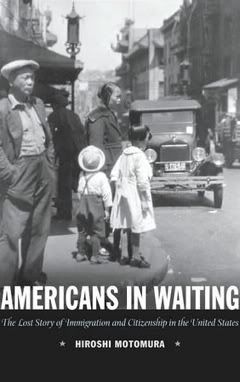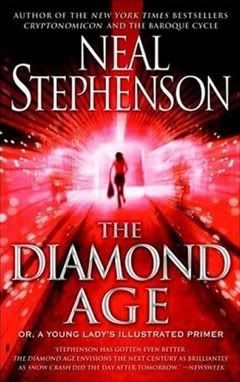 Hiroshi Motomura. Americans in Waiting: The Lost Story of Immigration and Citizenship in the United States, (Oxford University Press, 2006). ISBN:9780195336085
Hiroshi Motomura. Americans in Waiting: The Lost Story of Immigration and Citizenship in the United States, (Oxford University Press, 2006). ISBN:9780195336085
Some days, when I get off the downtown trolley stop, I alight into a crowd of well-dressed, smiling people. Some are standing alone, or with one or two other people, but many are surrounded by excited friends and family who carry cameras and make jokes in happy, keyed-up tones of voice. As I navigate the crowd, I realize that it is actually a line – one that stretches from the doors of the civic auditorium, through the nearby plaza, onto the sidewalk and around the corner.
Even though navigating my way through these crowds can be tricky, and some may find it silly or naive, I always feel my heart leap a little bit when I see them. You see, the people in this crowded line are waiting for a naturalization ceremony. Either they, or a loved one, is going to life their hand and take the oath that will make them a citizen of the United States. It is wonderful to see so many people so full of joy and anticipation at the culmination of their dreams – especially because I know that their path has been a long and difficult one.
The phrase “nation of immigrants” is used frequently, but few Americans seem to stop and think about what that really means. I live merely a stone’s throw away from the US/Mexican border, in a city, state, and nation that rely in large part on immigrant labor. I have passed through immigration control (both at and north of the border) more times than I can recall. I know that immigration paperwork is notoriously complex and confusing (a small example: the so-called “green card” has been beige for decades). Immigration rallies of all kinds are held on a frequent basis near my workplace. Yet I, in my genealogical research, have not yet found immigration papers for any of my immigrant ancestors, even though some of them were (taking the historical view) fairly recent arrivals. But the Swedes and Germans from my family tree who immigrated to America crossed the border (without much, if any, interaction with an immigration bureaucracy) before anyone really cared all that much about immigration issues. Over time, they became thoroughly assimilated into their communities and became Americans, in spite of the fact that they were born someplace else, because they did things like leaving their homes and traveling to America, buying (or ‘proving up’) land in America, and intending to raise their families in America. In short, they became Americans because they had demonstrated over time a commitment to becoming Americans. They were Americans-in-waiting.
My family’s story is exemplary of a status that Hiroshi Motomura calls immigration as transition. No, my immigrant ancestors weren’t Americans the moment they stepped off the boat, but at some point during the process of living their lives as Americans, they turned their dreams into reality. Motomura reports that this view of immigrants, though once predominant, began to fade from prominence in the mid-to late 1800s. Replacing this status are two others; one that Motomura calls immigration as contract, and another he calls immigration as affiliation.
 Motomura’s image of immigration as contract brings to my mind the world portrayed by Neal Stephenson in his books Snow Crash and The Diamond Age11 – a world in which contractual citizenship is taken to the ne plus ultra (or is it the reducto ad absurdum?) forms the very underpinnings of world politics and affiliation. This a world in which one can literally be a citizen of La Cosa Nostra or Confucianism, and in which law enforcement regularly inquires if an arrestee is a member of any “tribe, phyle [a term derived from affiliation, or, perhaps, phylum], registered diaspora, franchise-organized quasi-national entity, sovereign polity, or any other form of dynamic security collective”. In this view of citizenship, immigrants may become Americans in consideration of their cooperation with the (currently Byzantine) requirements of the immigration bureaucracy, and by obedience to the laws and norms of American society (such as not joining the Communist party, not using public welfare, etc). Just as immigration as transition was gradually overshadowed by the concept of immigration as transition, the contractual concept has lately begun to contend with a new view of immigration; that of affiliation.
Motomura’s image of immigration as contract brings to my mind the world portrayed by Neal Stephenson in his books Snow Crash and The Diamond Age11 – a world in which contractual citizenship is taken to the ne plus ultra (or is it the reducto ad absurdum?) forms the very underpinnings of world politics and affiliation. This a world in which one can literally be a citizen of La Cosa Nostra or Confucianism, and in which law enforcement regularly inquires if an arrestee is a member of any “tribe, phyle [a term derived from affiliation, or, perhaps, phylum], registered diaspora, franchise-organized quasi-national entity, sovereign polity, or any other form of dynamic security collective”. In this view of citizenship, immigrants may become Americans in consideration of their cooperation with the (currently Byzantine) requirements of the immigration bureaucracy, and by obedience to the laws and norms of American society (such as not joining the Communist party, not using public welfare, etc). Just as immigration as transition was gradually overshadowed by the concept of immigration as transition, the contractual concept has lately begun to contend with a new view of immigration; that of affiliation.
Motomura’s concept of immigration as affiliation is the view that, “the treatment of lawful immigrants and other noncitizens should depend on the ties they have formed in this country.” Going back to the case of my immigrant ancestors, this view dictates that their formation of ties to America – joining a church, buying land, paying taxes, and bringing their children up as Americans – should have dictated their treatment. In other words, the more a person has become assimilated into American society, the more they should be treated like Americans.
Motomura’s explication of these three views, while clearly supported by the history that he examines, could have used some careful delimitation at the outset of the discussion. For example, while the concept of immigration as contract seemed quite distinct from both immigration as affiliation and immigration as transition, these latter two options did not seem particularly distinct from each other. Isn’t the process of assimilation and affiliation in itself a transition? If so, aren’t these two views merely different ways of explaining the same process? While Motomura does make an effort farther on in his discussion to more clearly separate these views (mainly in his citation of case law), it would have been beneficial to establish their distinctness right from the beginning of the discussion, thus avoiding confusion, instead of trying to mend the confusion later on in the discussion.
In support of his contention about the three views of immigration, the author examines the politics and history of the past 150 years to explore why the concept of Americans-in-waiting has declined. Examining themes ranging from the deportation of criminals and “political undesirables”, plenary power, the phenomenon of Mexican immigration, the Asian Exclusion Acts, human rights, and the role of race, religion and ethnicity, and guiding the reader through the evolution of both case and statutory law, Motomura argues that revitalizing the view of immigration as transition is vital to creating a sense of inclusion (rather than rejection) among immigrants. When immigrants feel excluded from mainstream American society, they are less likely to participate fully in American life. This lack of participation leads to a myriad of harms – from the direct (such as reluctance to come forward and cooperate with law enforcement investigations), to the indirect (such as a reluctance to naturalize).
Motomura proposes that lawful immigrants should be treated like citizens (or citizens in waiting) until they are able to achieve that formal status. They would enjoy the same rights (such as voting, the ability to sponsor the immigration of close relatives) that citizens do. Once lawful immigrants become able to take the oath of naturalization, they would then have a choice; become a naturalized citizen and keep enjoying those rights, or choose not to become citizens – in which case, their status, rights and responsibilities under the law would decrease.
While Motomura’s arguments are persuasive insofar as they extend, they do not adequately address the problem of illegal immigration, nor, more importantly, does he explicate the reforms necessary for the immigration bureaucracy to operate in the fashion he proposes. The labyrinthine and sometimes Kafka-esque requirements of the old INS22, which were merely imported to the renamed ICE33 when it was formed under the Department of Homeland Security frequently baffle the most learned and experienced of practitioners. For the apparatus to a) shift their paradigm in dealing with immigrants, or to b) function in an even arguably effective manner under any paradigm would necessarily require reform and reconstitution of the entire immigration apparatus on a grand scale.
However, a book that thoroughly deals with the history and contemporary problems of immigration would run to hundreds of thousands of pages. That an author chooses to deal with only part of the issue is hardly a testament to laziness. Motomura’s book, however limited its scope, does, however explicate the shifting historical views of immigrants and immigration in a refreshing way. Overall, Motomura’s prose is accessibly written, closely reasoned and well researched. This would be a worthy purchase for any library that supports a public policy or American Studies program, or that collects materials dealing in matters of immigration or American history. In addition, because of Motomura’s discussion of the Asian immigrant experience, libraries that support Asian-American studies programs might also find this book to be a particularly welcome addition to their collections.

| Americans in Waiting: The Lost Story of Immigration and Citizenship in the United States Author: Hiroshi Motomura Binding: Paperback List price: $24.99 Amazon price: $22.49 |

| Snow Crash (Bantam Spectra Book) Author: Neal Stephenson Binding: Paperback List price: $15.00 Amazon price: $14.01 |

| The Diamond Age: Or, a Young Lady’s Illustrated Primer (Bantam Spectra Book) Author: Neal Stephenson Binding: Paperback List price: $15.00 Amazon price: $13.44 |
